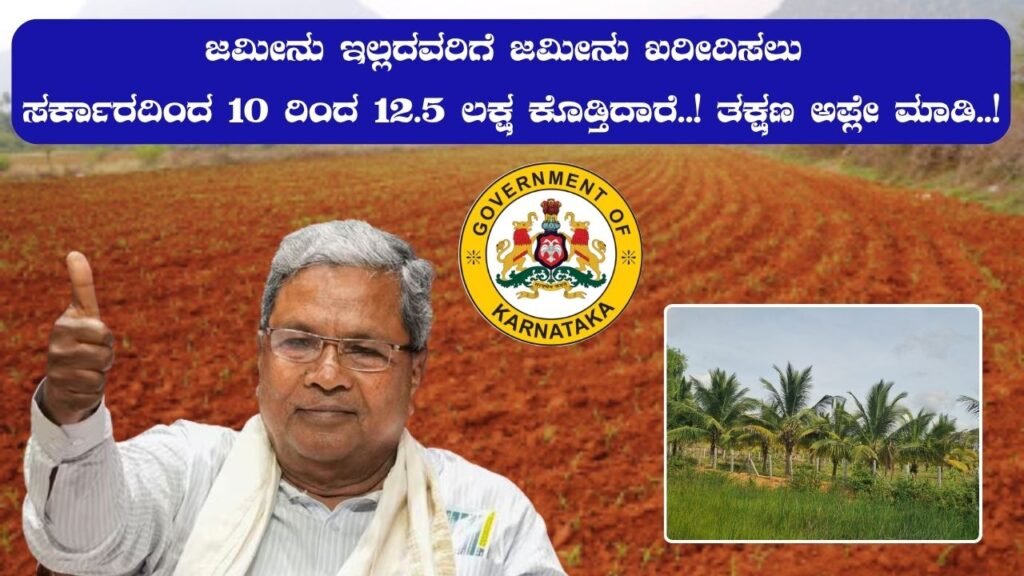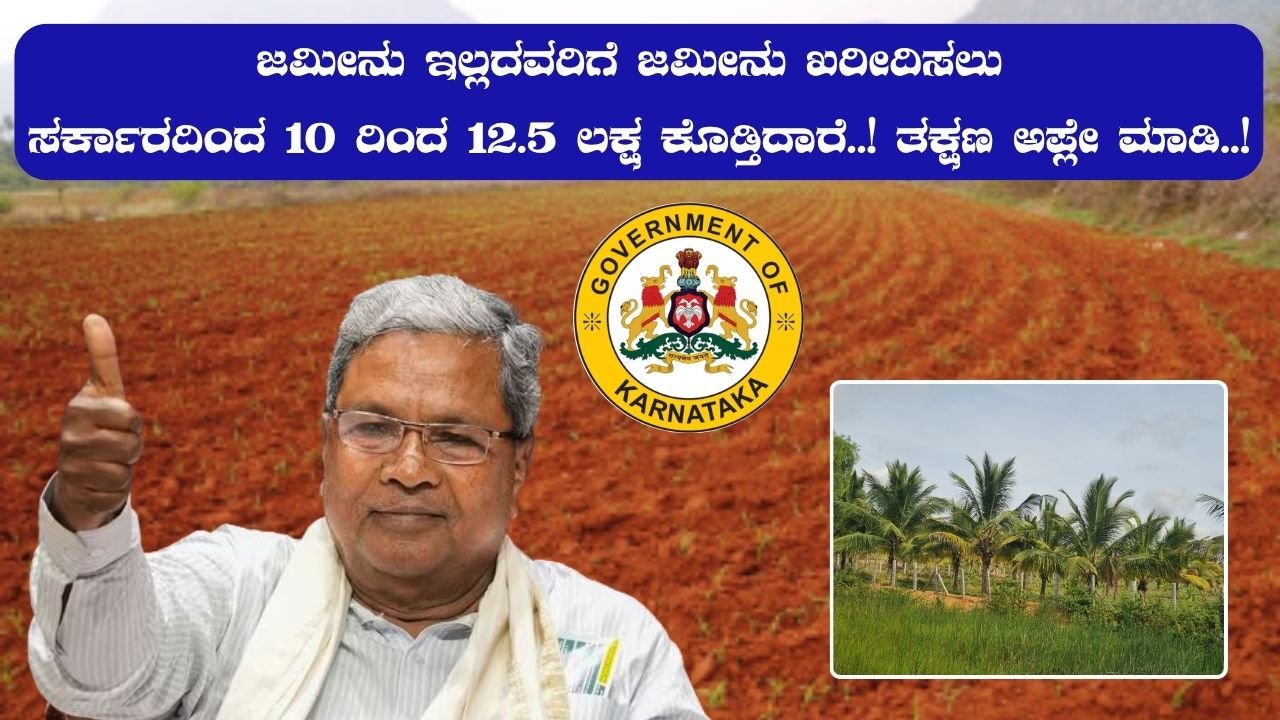Introduction
The Free Land Scheme in Karnataka represents a landmark socio-economic initiative by the state government to empower historically marginalized and landless populations—primarily Scheduled Castes (SC), Scheduled Tribes (ST), and other disadvantaged groups. By transforming long‑standing informal or unrecorded land usage into legal ownership, the scheme aims to foster economic upliftment, social dignity, and rural stability. Such an intervention aligns with Karnataka’s broader land reforms legacy, rooted in the principles of equitable land distribution championed since the era of historic leaders like D. Devaraj Urs

Origins and Policy Framework
The roots of the Free Land Scheme trace back to Karnataka’s steadfast commitment to land reforms, dating to the 1970s and accelerated under leaders such as Devaraj Urs, whose “land to the tiller” policy dismantled entrenched land hierarchies . Building on this foundation, current schemes—branded under names like Bho Odethana Yojane or Land Ownership Scheme—target landless agricultural laborers, widows, single women, and differently‑abled individuals. The shared mission: to convert government land or purchased parcels into officially titled plots for those in need
Eligibility and Allocation
Beneficiaries typically include SC/ST families, backward classes, economically weaker sections, women heads of households, and other vulnerable groups. Eligibility hinges on clear criteria: Karnataka residency, landlessness, age limits (typically 18–50 years), and possession of caste, income, and identity documents
Land parcels allocated range from:
- 2 acres of dry land or
- 1 acre of wetland or
- 0.5 acre of garden land,
depending on district and availability
Costs vary geographically: in Bengaluru Urban, Bengaluru Rural, and Chikkaballapur districts, unit cost is capped at ₹25 lakh; elsewhere, ₹20 lakh
Financial Structure and Administration
Funding splits evenly between subsidy and loan:
- 50 % subsidy,
- 50 % term loan at around 6 % interest, repayable over 10 years via annual or semi‑annual installments
Administrative oversight is provided by specialized corporations:
- Dr. B.R. Ambedkar Development Corporation (for SC),
- Karnataka Maharshi Valmiki ST Development Corporation (for ST),
- Minority Development Corporation (for minority communities)
Applicants apply online—via portals like Seva Sindhu—or offline through Karnataka One and Grama One centres. The process includes local revenue officer inspections to verify continuous land usage and eligibility
Impact and Benefits
- Economic Empowerment
Legal land ownership enables beneficiaries to farm, access bank credit, subsidies, and better livelihoods—breaking cycles of poverty. Studies show land ownership improves income stability and encourages investment in land - Social Equity
The policy elevates marginalized individuals by granting identity, legal respect, and the power to participate fully in society. Many lands are registered in women’s names, advancing gender empowerment . - Rural Stability
Ownership reduces unrest, curbs migration to urban slums, and nurtures rural development through anchored livelihoods and reduced land disputes
Challenges and Responses
- Land Scarcity
Limited availability of government or suitable private land delays allotments in some areas . - Post‑allotment Support
Some beneficiaries lack resources for irrigation, quality seeds, or agronomic skills, hindering optimal land use - Bureaucratic Delays and Awareness Gaps
Awareness of the scheme remains low; many eligible individuals are uninformed. Bureaucratic red tape and documentation burdens can stall progress
Government Initiatives to Strengthen the Program
- Monitoring and Training: Institutional follow‑ups, agricultural training, and financial literacy sessions help sustain utilization and repayment capacity .
- Digital Land Records: Integration with digital platforms like Svamitva Yojana, drone surveys, and digital registries ensures transparency and traceable records
- Revenue Village Declarations: Thousands of habitations are being classified as official revenue villages for inclusion in the scheme and records
Conclusion
The Free Land Scheme exemplifies Karnataka’s firm commitment to social justice and land rights. By legally empowering marginalized groups with land ownership, the state advances economic stability, reduces inequality, and nurtures rural resilience. For long-term success, however, sustained awareness campaigns, supportive agricultural infrastructure, and robust digital records are vital. When effectively implemented, this initiative not only transforms individual lives but also sets a powerful example for equitable development across India.
About Me – I’m Tech94, a News Writer from Bangalore
My name Harish, and I am a news writer based in Bangalore, Karnataka. Writing the truth is not just my profession — it’s my passion. I believe in responsible journalism that informs, inspires, and gives voice to the people.
I focus on stories that matter — from local developments and political updates to social issues and cultural events across Karnataka. Through my articles, I aim to highlight real concerns, raise awareness, and bring meaningful stories to light.
As a proud Kannadiga, I bring the soul of Karnataka into my writing. I am committed to sharing stories with integrity, empathy, and depth. Every article I write is a small step toward empowering readers with knowledge and truth.
My Key Areas of Interest:
Karnataka State News
Bangalore City Updates
Political and Government News
Social Issues and Public Voices
Culture, Festivals, and Community Stories
My Belief:“Every voice matters. As a journalist, I am here to listen, write, and speak up for the people.”
Follow my work for real, relevant, and responsible news — straight from the heart of Karnataka.
